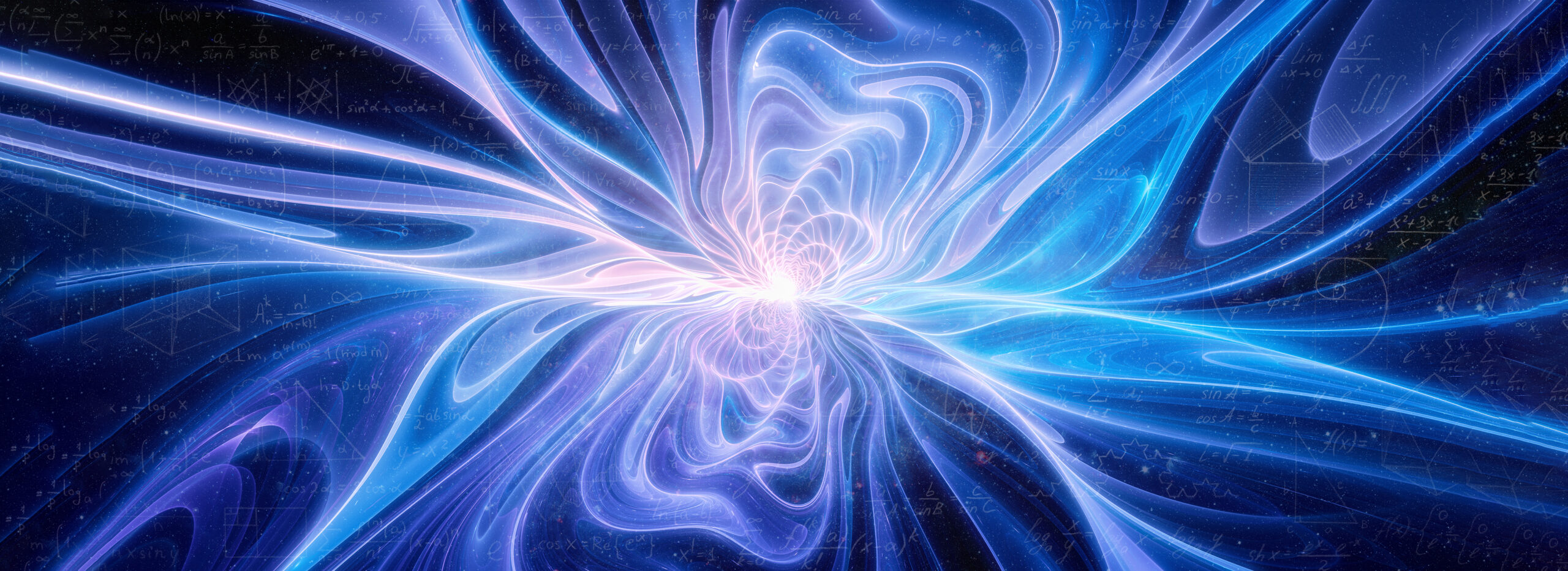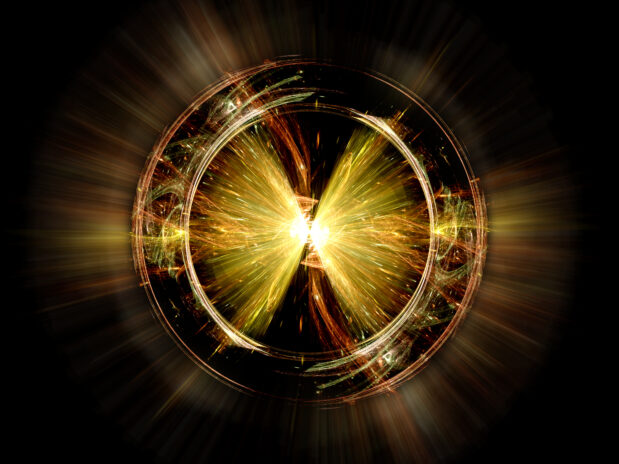Creation Implications of a Fifth Force of Physics
Physicists have established that four fundamental forces of physics appear to govern all the observed operations within the universe. These four forces—gravity, electromagnetism, the weak nuclear force, and the strong nuclear force—appear to be exquisitely fine-tuned to make human existence possible. If these four forces indeed explain all the operations that have occurred in the history of the universe, then the universe, its fundamental particles, and space and time must have been created.1
Certain extensions of Einstein’s theory of general relativity, however, predict a fifth force of physics operating within massive bodies. Many physicists have speculated the operation of such a force might imply major alterations to our current understanding of cosmic and particle creation models—alterations that could potentially challenge biblical creation models.
Past Limits on a Fifth Force
Cosmology models based on scalar-tensor theories predict that a fifth force of physics would alter the dynamics of large-scale structures in the universe and shift the positions and polarizations in cosmic microwave background (CMB) acoustic peaks.2 So far, CMB maps and large-scale structure observations place only a weak constraint on a possible fifth force. By such means, astronomers have established that the fifth force coupling strength must be less than 0.1.3 (Maximum coupling strength = 1. No coupling = 0.)
A possible fifth source of physics also predicts that stars would manifest larger diameters and greater masses than if such a force did not exist. Observations of white dwarf stars,4 red and brown dwarf stars,5 Cepheid variable stars and hydrogen-burning stars like the Sun,6 binary pulsars,7 and gravitational waves observed from the merger of two neutron stars8 combine to establish a limit on the fifth force coupling strength of less than 0.1.
New Limit on a Fifth Force
In 2019, two astronomers, Ippocratis Saltas and Ilídio Lopes, explained how helioseismic observations have the potential to improve dramatically upon stellar physics constraints on the fifth force coupling strength.9 They demonstrated how accounting for the interplay between a fifth force of physics (if it exists) and the Sun’s opacity, diffusion, metallicity, and equation of state predicts a major alteration in the Sun’s sound speed in a certain region of the Sun’s interior.
The effect of a possible fifth force is nonexistent at the Sun’s surface but leaves a strong signal at 130,000 miles (209,000 kilometers) from the Sun’s center. At this position in the Sun’s interior physics uncertainties become negligible. The only significant uncertainty is in the accuracy of helioseismic observations.
In a paper published online a few weeks ago, Saltas and Jørgen Christensen-Dalsgaard performed a careful analysis of helioseismic observations.10 This analysis yielded the most stringent limit on the possible existence of a fifth force of physics. Saltas and Christensen-Dalsgaard established that the limit on the fifth force coupling strength must be less than 0.001 and likely less than 0.0005. They concluded their paper with a discussion of their plans to extend their analysis to achieve an even more stringent constraint on a proposed fifth force of physics.
Implications of the New Limit
The new limit on the fifth force of physics establishes that, if it exists, it does not play any significant role in the dynamics of massive bodies in the universe. Thus, appeals to a possible existence of a fifth force as a means to escape the theistic implications of the big bang creation models are doomed to fail. Likewise, such appeals as a way to rescue naturalistic interpretations of the origin of life will be of no avail. The research endeavors of Saltas and his colleagues provide yet another demonstration that the more we learn about science the more evidence we accumulate for the biblical doctrines of creation.
Endnotes
- Hugh Ross, The Creator and the Cosmos, 4th ed. (Covina, CA: RTB Press, 2018), 25–198.
- Simone Peirone et al., “Cosmological Constraints and Phenomenology of a Beyond-Horndeski Model,” Physical Review D 100, no. 6 (September 10, 2019): id. 063509, doi:10.1103/PhysRevD.100.063509.
- Takashi Hiramatsu, “CMB Constraints on DHOST Theories,” Journal of Cosmology and Astroparticle Physics 2022, no. 10 (October 2022): id. 035, doi:10.1088/1475-7516/2022/10/035; Peirone et al., “Cosmological Constraints and Phenomenology.”
- Eugeny Babichev et al., “Relativistic Stars in beyond Horndeski Theories,” Classical and Quantum Gravity 33, no. 23 (November 8, 2016): id. 235014, doi:10.1088/0264-9381/33/23/235014; Rajeev Kumar Jain, Chris Kouvaris, and Niklas Grønlund Nielsen, “White Dwarf Critical Tests for Modified Gravity,” Physical Review Letters 116, no. 15 (April 15, 2016): id. 151103, doi:10.1103/PhysRevLett.116.151103.
- Jeremy Sakstein, “Hydrogen-Burning in Low Mass Stars Constrains Scalar-Tensor Theories of Gravity,” Physical Review Letters 115, no. 20 (November 10, 2015): id. 201101, doi:10.1103/PhysRevLett.115.201101; Jeremy Sakstein, “Testing Gravity Using Dwarf Stars,” Physical Review D 92, no. 12 (December 21, 2015): id. 124045, doi:10.1103/PhysRevD.92.124045.
- Jeremy Sakstein, Michael Kenna-Allison, and Kazuya Koyama, “Stellar Pulsations in beyond Horndeski Gravity Theories,” Journal of Cosmology and Astroparticle Physics 2017, no. 3 (March 6, 2017): id. 007, doi:10.1088/1475-7516/2017/03/007.
- Alexandru Dima and Filippo Vernizzi, “Vainshtein Screening in Scalar-Tensor Theories before and after GE170817: Constraints on Theories beyond Horndeski,” Physical Review D 97, no. 10 (May 29, 2018): id. 101302, doi:10.1103/PhysRevD.97.101302.
- Jeremy Sakstein and Bhuvnesh Jain, “Implications of the Neutron Star Merger GW170817 for Cosmological Scalar-Tensor Theories,” Physical Review Letters 119, no. 25 (December 18, 2017): id. 251303, doi:10.1103/PhysRevLett.119.251303; Dima and Vernizzi, “Vainshtein Screening.”
- Ippocratis D. Saltas and Ilídio Lopex, “Obtaining Precision Constraints on Modified Gravity with Helioseismology,” Physical Review Letters 123, no. 9 (August 30, 2019): id. 091103, doi:10.1103/PhysRevLett.123.091103.
- Ippocratis D. Saltas and Jørgen Christensen-Dalsgaard, “Searching for Dark Energy with the Sun,” Astronomy & Astrophysics 667 (published online November 15, 2022): id. A115, doi:10.1051/0004-6361/202244176.






